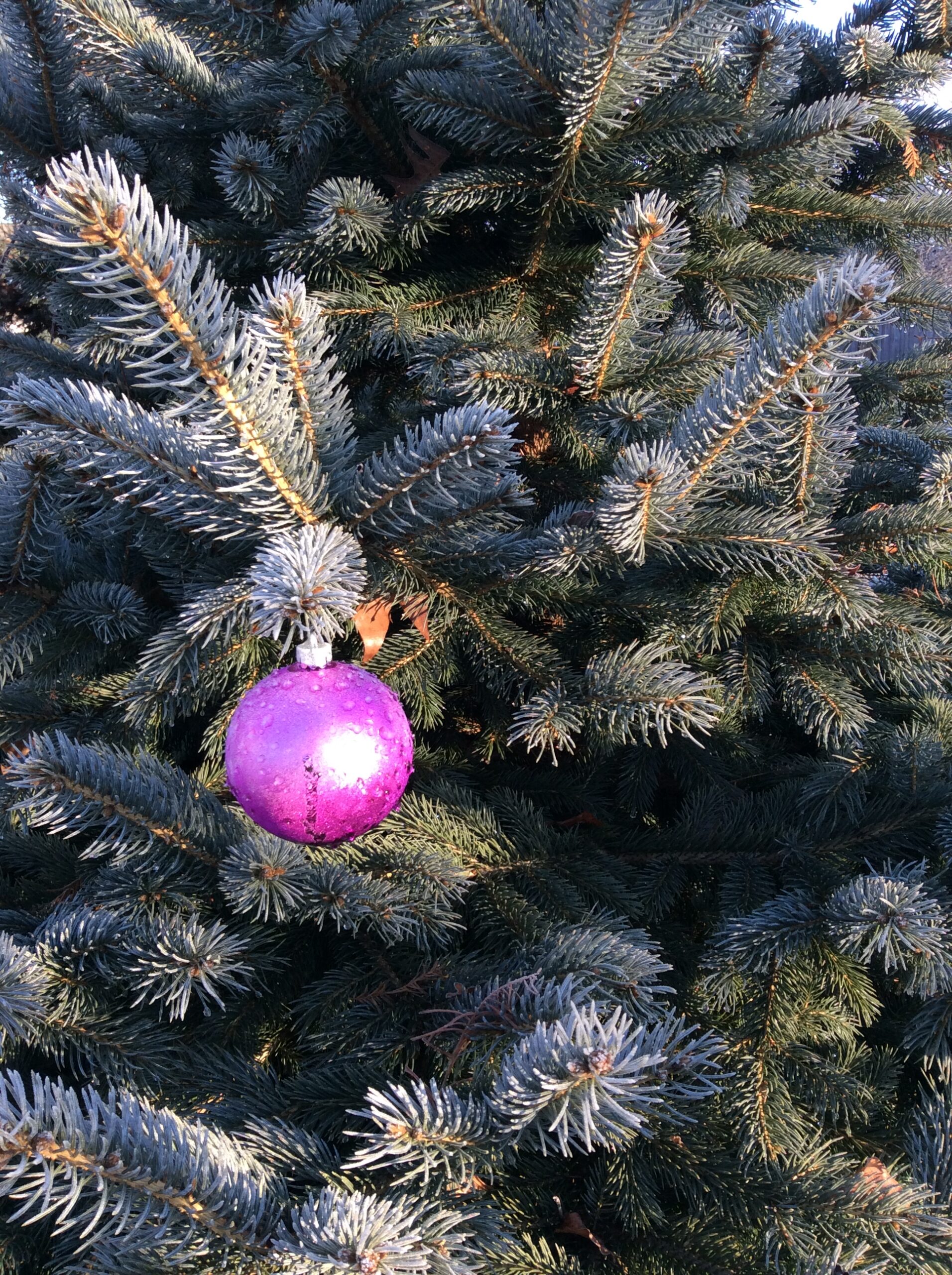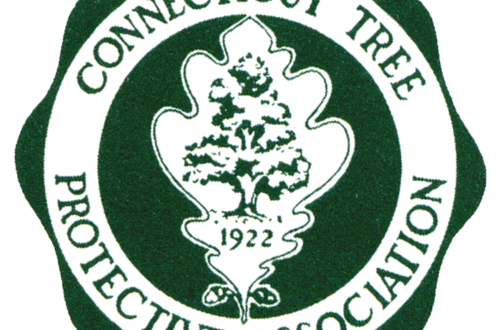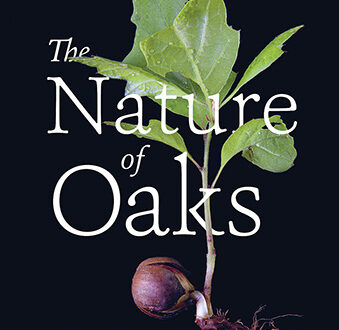By Dick Jaynes
This article was originally published in a digital-only edition in November/December 2015
Christmas trees are an important farm crop grown on more than 5,000 acres in Connecticut. Tree farmers help maintain the picturesque, bucolic farmland that is increasingly scarce in our state.
Most tree farmers belong to the Connecticut Christmas Tree Growers Association which has more than 200 members. The association was started some 50 years ago when raising Christmas trees in Connecticut expanded rapidly.
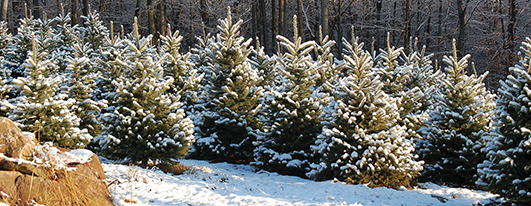
From the beginning, the University of Connecticut and The Connecticut Agricultural Experiment Station have been valuable resources for growers. Despite the best efforts of the Christmas tree growers, the local supply of trees does not meet the demand so trees are imported from out of state. We need more Christmas tree growers, especially in New Haven and Fairfield Counties.
Christmas tree farming can be viewed as a short- or long-term crop. Compared to forest trees the turnaround is short, but long compared to the one season needed for most farm crops. The typical tree harvested for Christmas is 10 years old.
Seedlings are most often produced by specialty nurseries. The seeds are started in plug containers in a greenhouse or the seed sown outdoors in soil beds. Tree growers often purchase small one- or two-year old seedlings and bed them out at 4″ x 6″ spacing for another one to two years. The two- to four-year old seedlings, now 8 to 18 inches tall, are then field planted at approximately 5′ x 6′ spacing.
First harvest is 6 to 10 years later, depending on soil, care and species. This is obviously not a business for the impatient wanting to turn a quick buck.
Many trees are grown on marginal farmland … land that is rocky, has steep slopes or thin soils. Full sun is required and the soil should not be too wet nor the site in a frost pocket. Prior to planting, trees and brush need to be removed and it’s best if sod and other vegetation are eliminated.
Seedlings are usually planted in spring shortly after the soil thaws. Straight rows make for easier mowing. Mowing at least twice a year is normal. If weeds are controlled right around the trees, survival and growth is better. Keeping the seedlings straight is important as no one likes a tree with a crooked stem.
Once the trees are waist high, pruning is usually necessary and is required annually thereafter to harvest. Most of us prune in summer when growth extension is completed. White pine is the first species to be pruned (late June); Douglas fir and Fraser fir are the last.
Some pests may require control such as aphids, mites, and scale. Monitoring the trees regularly during the growing season is important. Deer can be a real problem. They love the true firs and Douglas fir but they leave the sharp-needled blue spruce alone. Electric or a high net fence can keep them out.
To plant a Christmas tree seedling and expect to harvest a nice tree in eight years is about as likely as planting a tomato plant in spring, doing nothing, and expecting a bountiful crop. It seems there is always some task year round to keep a tree farm in top shape.
The Species
There are at least a dozen conifer species that can be grown for Christmas trees in Connecticut. The top six are Fraser fir (Abies fraseri), balsam fir (A. balsamea), Douglas fir (Pseudotsuga menziesii), blue or Colorado spruce (Picea pungens), white spruce (P. glauca) and white pine (Pinus strobus).
White pine is the only native species grown. We keep trying exotic species looking for good growth and form, pest resistance and tolerance to poorly drained soils.
White pine is also the only long-needled conifer that is likely to be found on Connecticut’s Christmas tree farms. They grow fast, tolerate many soil types, pruning is a must and needle retention of cut trees is great. The flexible branches are a challenge for heavy ornaments, but are well suited for strands of garland, popcorn or small lights.
Scotch or Scots pine (P. sylvestris), with somewhat long needles, used to be grown but is too susceptible to insects and diseases so is out of favor now.
Douglas fir is native to the Rockies but grows well here; however, there are some challenging insect and disease problems that have increased in recent years. Needles are a bit longer than most true firs or spruce and needle retention is excellent.
White spruce, native a bit further north, used to be the tree of choice grown by Connecticut growers. It grows with a formal pyramidal shape and has bluish green needles that are a bit shorter than those of blue spruce. However, needle retention is problematic, especially if the tree is allowed to run out of water.
Norway spruce (P. abies) bears similar characteristics to white spruce but with darker green foliage.
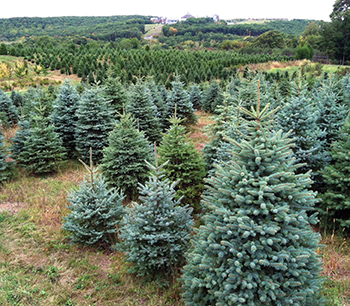
Blue spruce is loved by customers for its bluish colored needles, formal tree shape and stiff branches that hold heavy ornaments. But the sharp needles are a challenge. A fresh cut tree kept in water retains its needles well.
Balsam fir has been a popular Christmas tree for years. They were usually imported from northern New England and Canada, but many are grown here now.
Balsam fir is considered to have the best fragrance, branches are fairly stiff, and needles are not sharp and hold up well on cut trees.
Fraser fir is native to the high elevations of the southern Appalachians and perhaps the most sought after Christmas tree in Connecticut. Needle retention is outstanding.
They are easy to confuse with the closely related balsam fir but the needles are more silvery underneath, have blunt tips and are less fragrant.
Years ago it was thought that balsam and Fraser fir could not be grown in Connecticut, but growers found that with a bit of weed and pest control they do fine, as long as they are not planted in wet soils. However, in the home landscape they are difficult to maintain in prime condition.
Concolor or white fir (Abies concolor) is occasionally grown on Connecticut tree farms. Needles have the color of blue spruce, are longer than the other firs, not sharp to the touch and they are the only conifer to have a citrus odor when the needle are crushed. They tolerate dry soil and do well in the home landscape.
Turkish fir (A. bornmuelleriana) has only recently been grown here. They tend to be slow growing but tolerate wet, heavy soils better than the other species. There is a multistate effort underway among growers and researchers to find a geographic seed source in its native range in Eastern Europe that produces a faster growing tree.
Korean fir (A. koreana) is a gorgeous ornamental and good looking Christmas tree. Foliage is dark green and needles silvery white underneath. The problem for growers is that the trees often develop cones a year or two before harvest and, unless they are handpicked early in the growing season, they preempt branch growth in the tree top, resulting in a less attractive tree.
Don’t be surprised to discover other kinds of trees being grown successfully at tree farms, including Meyer’s spruce and other true firs like Nikko, Veitch, King Boris and some hybrids.
Selection & Care of a Cut Tree
If at all possible, treat your family to selecting and cutting a fresh cut tree from a Connecticut plantation. Wander the fields, enjoy the fresh air and find that perfect tree. Choose and cut farms usually will supply a hand saw to cut the tree and twine to tie it to a vehicle. Many growers will also shake the tree to dislodge dead needles and debris.
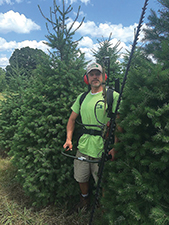
If you’re visiting a tree farm for the first time, you may be shocked to find different kinds of trees and a range of sizes all with the same price; that is, any tree in the field costs the same. Growers have found that it is efficient, avoids haggling and, of course, as pre-tagging becomes less common, every customer gets the best tree in the field.
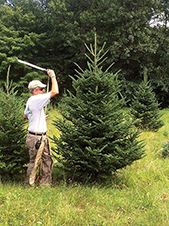
Most important in keeping the tree in good condition is water. If it has been cut for several hours a fresh cut is advised, removing a half-inch of the trunk.
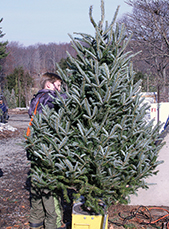
If the tree is not to be set up for several days, stand it up outdoors in water using a disposable container, like a cut-off gallon milk jug. Outdoors, or in an unheated garage in water, the tree will remain as fresh as if still uncut in the field. Thus you can select a tree early in the season but not feel compelled to set it up immediately.
A tree stand should hold at least a gallon of water for a 6- to 7-foot tree and more for larger trees. Trees can take up a lot of water, especially the first few days indoors. Do not let the stand run out of water.
For a list of Christmas tree farms in Connecticut go to www.CTChristmasTree.org This site also provides information on growing Christmas trees and caring for your cut tree.
Enjoy the holidays!

Dick Jaynes started planting trees when he was 11. The tree farm has always been a family endeavor. Dick’s father Harold was the lead person in the early years. Then Dick’s wife, Sally, and their three children pitched in. Burton, the oldest, is the lead person now but his siblings, Linda and Scott, and the nine grandchildren (all boys!) help, especially on sales. The Broken Arrow Nursery staff contribute throughout the year, but especially in November and December: they are the primary fabricators of fabulous wreaths made with plant material gathered from the nursery landscape.
Dick has a bachelor’s from Wesleyan and a PhD from Yale. He was a plant breeder at The CT Agricultural Experiment Station for 25 years, specializing in chestnut and laurel. He has bred and released many mountain laurel cultivars. He and Sally started Broken Arrow Nursery in 1984. Dick is a past president of the Connecticut Christmas Tree Growers Association and serves as an advisor to the board of directors.
